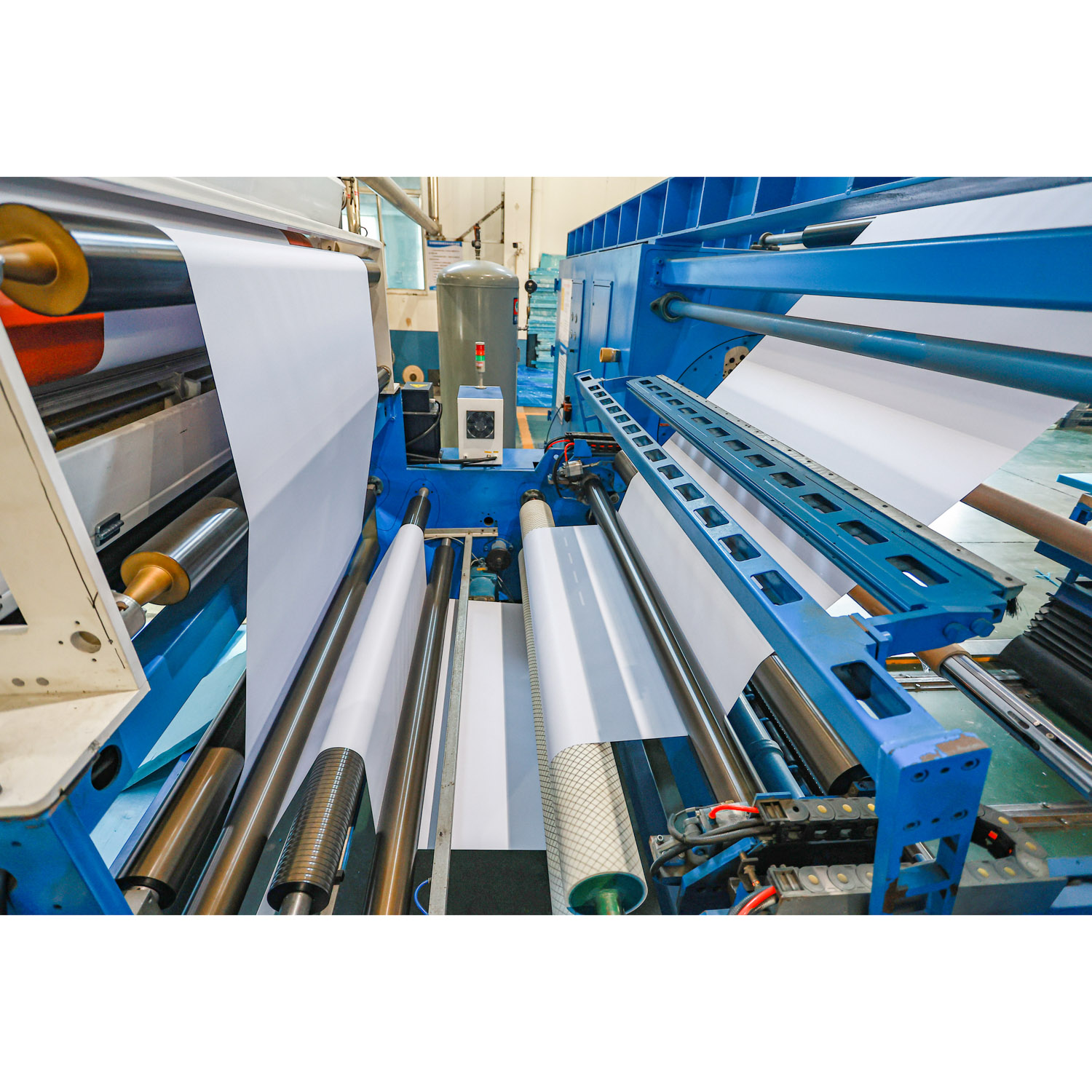Introduction
In today’s world, where environmental sustainability is more important than ever, finding eco-friendly materials has become crucial. One such material making waves is the RPET sheet. Derived from recycled plastics, RPET sheets are transforming how we think about waste and sustainability, especially in manufacturing everyday items like cards. Let's dive into what makes RPET sheets a fantastic choice for eco-friendly card production.
What is RPET?
RPET stands for Recycled Polyethylene Terephthalate. It's a type of plastic that’s repurposed from post-consumer PET products, such as water bottles and food containers. The recycling process involves collecting used PET products, cleaning them, and then reprocessing them into RPET sheets.
Benefits of Using RPET Sheets
Environmental Benefits
Using RPET sheets significantly reduces plastic waste, as it diverts PET products from landfills and the ocean. It also conserves resources by reducing the need for virgin plastic production, which requires substantial energy and raw materials.
Economic Benefits
RPET sheets can be cost-effective, especially as the technology for recycling PET improves. Businesses can often find that using recycled materials can reduce costs in the long run, not to mention the potential savings from waste disposal.
Versatility and Durability
RPET sheets are incredibly versatile. They can be used in a variety of applications beyond card manufacturing, including packaging, textiles, and even construction materials. They are also durable and can withstand various processing techniques, ensuring longevity and quality.
RPET Sheets in Card Manufacturing
Why RPET is Ideal for Cards
RPET sheets are ideal for card manufacturing due to their flexibility, strength, and printability. Whether for business cards, greeting cards, or identification cards, RPET sheets offer a reliable and eco-friendly alternative.
Common Applications
Common applications include business cards, gift cards, membership cards, and event tickets. The material’s quality ensures that these cards can handle wear and tear, while still looking professional and polished.
Environmental Impact of RPET Sheets
Using RPET sheets helps reduce the overall environmental footprint of plastic products. It cuts down on the need for new plastic production, thereby saving energy and reducing greenhouse gas emissions. Additionally, it supports the recycling industry, creating a circular economy for plastics.
Comparing RPET with Traditional Materials
RPET vs. Virgin Plastic
Compared to virgin plastic, RPET offers a more sustainable option. Virgin plastic production is resource-intensive, involving significant energy use and raw material extraction. In contrast, RPET repurposes existing plastic, reducing environmental impact.
RPET vs. Other Recycled Materials
When compared to other recycled materials, RPET often stands out for its versatility and durability. While other recycled materials can also reduce waste, RPET's wide range of applications and robustness make it particularly valuable.
Design and Customization Options
Printing on RPET Sheets
One of the great features of RPET sheets is their excellent printability. They can be printed with high-quality images and text, making them perfect for visually appealing cards.
Embossing and Texturing
RPET sheets can also be embossed or textured to add a tactile element to cards. This customization enhances the user experience and adds a premium feel to the final product.
Future Trends in RPET Sheets
Innovations in Recycling Technology
The future looks bright for RPET, with continuous innovations in recycling technology. Advances are making it easier and more cost-effective to produce high-quality RPET sheets.
Market Growth Predictions
The market for RPET is expected to grow significantly as more industries recognize the material's benefits. Increased consumer demand for sustainable products will likely drive this growth.
Conclusion
In summary, RPET sheets offer a sustainable and versatile solution for card manufacturing. They help reduce plastic waste, conserve resources, and provide a durable material for various applications. By choosing RPET, businesses and consumers alike can contribute to a more sustainable future. It’s time to embrace this eco-friendly material and make a positive impact on our planet.
 FAQs
FAQs
What does RPET stand for?
RPET stands for Recycled Polyethylene Terephthalate, a type of plastic made from recycled PET products.
Are RPET sheets safe for food packaging?
Yes, RPET sheets can be made safe for food packaging, provided they meet specific regulatory standards.
How can I ensure the quality of RPET sheets?
Ensure quality by sourcing from reputable suppliers and checking for certifications that guarantee the purity and strength of the RPET sheets.
What are the cost implications of using RPET?
While RPET can sometimes be more expensive initially, it often leads to cost savings in waste management and can attract eco-conscious consumers, balancing out the costs.
Can RPET sheets be recycled again?
Yes, RPET sheets can be recycled again, contributing to a circular economy and further reducing waste.
English
العربية
Français
Русский
Español
Português
Deutsch
italiano
日本語
한국어
Nederlands
Tiếng Việt
ไทย
Polski
Türkçe
አማርኛ
ພາສາລາວ
ភាសាខ្មែរ
Bahasa Melayu
ဗမာစာ
தமிழ்
Filipino
Bahasa Indonesia
magyar
Română
Čeština
Монгол
қазақ
Српски
हिन्दी
فارسی
Kiswahili
Slovenčina
Slovenščina
Norsk
Svenska
українська
Ελληνικά
Suomi
Հայերեն
עברית
Latine
Dansk
اردو
Shqip
বাংলা
Hrvatski
Afrikaans
Gaeilge
Eesti keel
Māori
සිංහල
नेपाली
Oʻzbekcha
latviešu
অসমীয়া
Aymara
Azərbaycan dili
Bamanankan
Euskara
Беларуская мова
भोजपुरी
Bosanski
Български
Català
Cebuano
Corsu
ދިވެހި
डोग्रिड ने दी
Esperanto
Eʋegbe
Frysk
Galego
ქართული
guarani
ગુજરાતી
Kreyòl ayisyen
Hausa
ʻŌlelo Hawaiʻi
Hmoob
íslenska
Igbo
Ilocano
Basa Jawa
ಕನ್ನಡ
Kinyarwanda
गोंगेन हें नांव
Krio we dɛn kɔl Krio
Kurdî
Kurdî
Кыргызча
Lingala
Lietuvių
Oluganda
Lëtzebuergesch
Македонски
मैथिली
Malagasy
മലയാളം
Malti
मराठी
ꯃꯦꯇꯥꯏ (ꯃꯅꯤꯄꯨꯔꯤ) ꯴.
Mizo tawng
Chichewa
ଓଡ଼ିଆ
Afaan Oromoo
پښتو
ਪੰਜਾਬੀ
Runasimi
Gagana Samoa
संस्कृत
Gaelo Albannach
Sepeti
Sesotho
chiShona
سنڌي
Soomaali
Basa Sunda
Wikang Tagalog
Тоҷикӣ
Татарча
తెలుగు
ትግንያውያን
Xitsonga
Türkmençe
संस्कृत
ئۇيغۇرچە
Cymraeg
isiXhosa
ייִדיש
Yorùbá
isiZulu










































